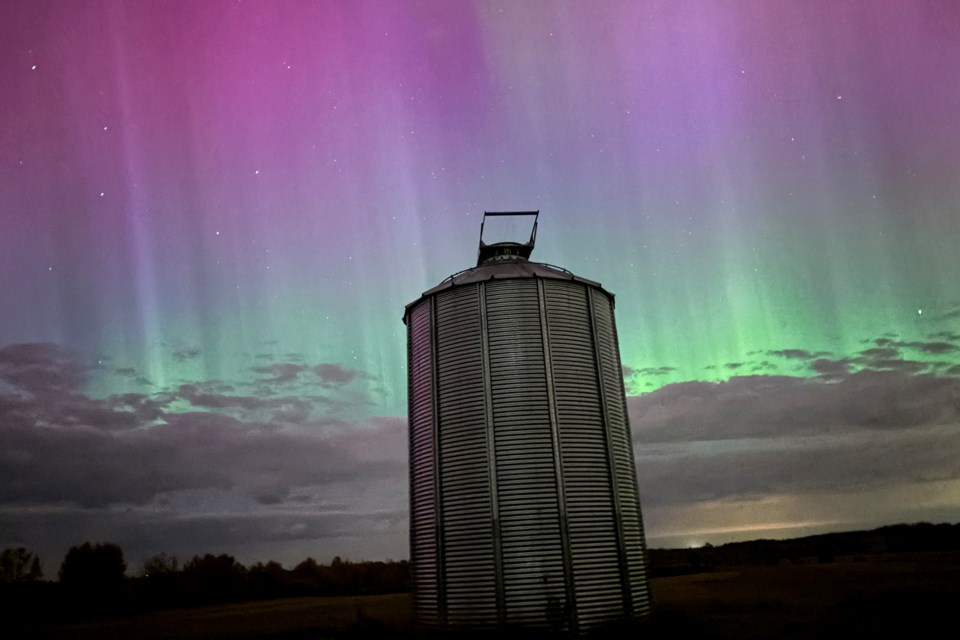From north to south Albertans had the chance to enjoy the dancing northern lights twice in the past week.
A solar storm on Oct. 7 brought the aurora to Alberta skies and on Oct. 10 a rare G4 geomagnetic storm lit up the sky again.
According to the Canadian Space Agency, the northern lights most often occur at altitudes of 100 to 300 kilometres in the atmosphere but can sometimes occur at altitudes of up to 600 kilometres from the ground. The agency says the colours of the northern lights are determined by a number of factors including the composition of gases in Earth's atmosphere, the altitude where the aurora occurs, the density of the atmosphere and the level of energy involved.
They include:
• Green: Green is the most common colour seen from the ground and is produced when charged particles collide with oxygen molecules at altitudes of 100 to 300 kilometres.
• Pink and dark red: Occasionally, the lower edge of an aurora will have a pink or dark red fringe which is produced by nitrogen molecules at altitudes of around 100 kilometres.
• Red: A bit higher in the atmosphere (at altitudes of 300 to 400 kilometres), collisions with oxygen atoms produce red auroras.
• Blue and purple: Hydrogen and helium molecules can produce blue and purple auroras but the agency says these colours tend to be difficult to see against the night sky.



